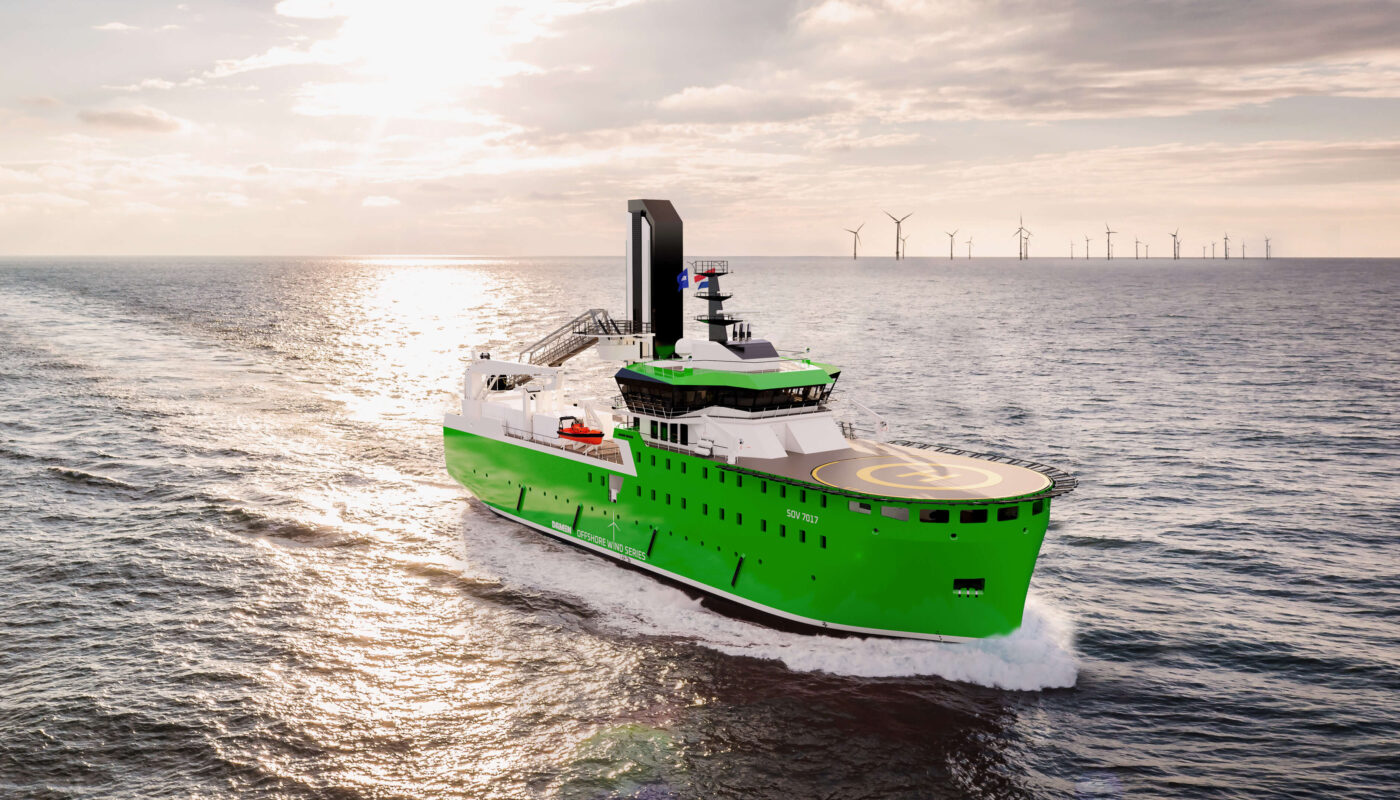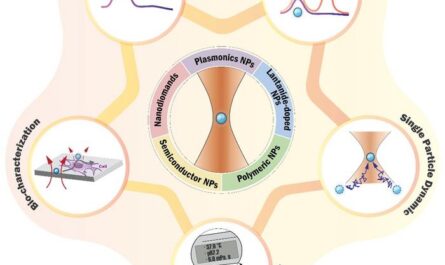Dutch shipbuilder, Damen, has introduced an all-electric version of its 70-meter-long hybrid service vessel designed to support offshore wind farm operations. The company aims to charge the batteries directly from a wind turbine, offering a cleaner and more sustainable solution for offshore servicing needs.
While giant wind turbines are becoming increasingly common off coastlines worldwide, the vessels used for servicing these wind farms are not as environmentally friendly as they could be. The new Damen SOV 7017 E aims to change that. The vessel is part of the Damen Service Operation Vessels range, which currently consists of four hybrid diesel/battery vessels running from 60 to 88 meters in length. These vessels can accommodate between 44 and 120 personnel at a time and feature four azimuth thrusters.
The all-electric version, measuring 70.1 meters in length, is equipped with two HVO/diesel generators, but these are only intended for emergency or backup purposes. The vessel primarily operates using a 15-MWh Lithium Iron Phosphate battery system for up to 98% of all-day full electric operations, or a 10-MWh battery bank for 75% electric operations. Its propulsion system includes four 900-kW azimuth thrusters arranged in a double-ended configuration, enabling a top speed of 12 knots.
Damen has partnered with MJR Power & Automation from the UK for an innovative offshore charging solution. This system utilizes the vessel’s motion-compensated gangway to connect to a wind turbine or offshore substation, allowing the battery bank to be charged at sea via a 4-MW/11-kV connector while the vessel is in low-power mode. With this technology, Damen estimates that a single turbine could fully charge the vessel’s battery in just a few hours. However, offshore charging stations will need to be installed on wind turbines and offshore substations, utilizing existing offshore infrastructure. The gangway is controlled from the wheelhouse, and plugging in and unplugging can be done without manual intervention. MJR is currently developing an 8-MW offshore charging solution to enable larger vessels in Damen’s fleet to operate fully electrically.
The SOV 7017 E can be configured with 60 cabins, offering Wi-Fi and access to video-on-demand services, allowing accommodation for up to 40 technicians plus crew. It also features storage space, workshops, a restaurant, gym, and game room.
Mark Couwenberg, a representative from Damen, states that the launch of the SOV 7017 E demonstrates that the technology exists to make offshore wind farm operations fully electric. By harvesting energy directly from the wind farm, there is a clear reduction in operational expenses, leading to a strong business case for this model. However, the realization of fully electric offshore operations requires collaboration among ship builders, vessel operators, and wind farm developers. Damen looks forward to participating in such collaborations to advance this concept and make offshore energy production more sustainable.
In conclusion, Damen has introduced an all-electric offshore wind farm service vessel that can be charged directly from a wind turbine, offering a cleaner and more sustainable solution for offshore servicing needs. The vessel is equipped with a battery system for electric operations, along with generators for emergency backup. Damen has partnered with MJR Power & Automation to develop an innovative offshore charging solution that utilizes the vessel’s gangway to charge the batteries at sea. The vessel can accommodate technicians and crew, and Damen believes that this concept can make offshore energy production more sustainable.
*Note:
1. Source: Coherent Market Insights, Public sources, Desk research
2. We have leveraged AI tools to mine information and compile it




